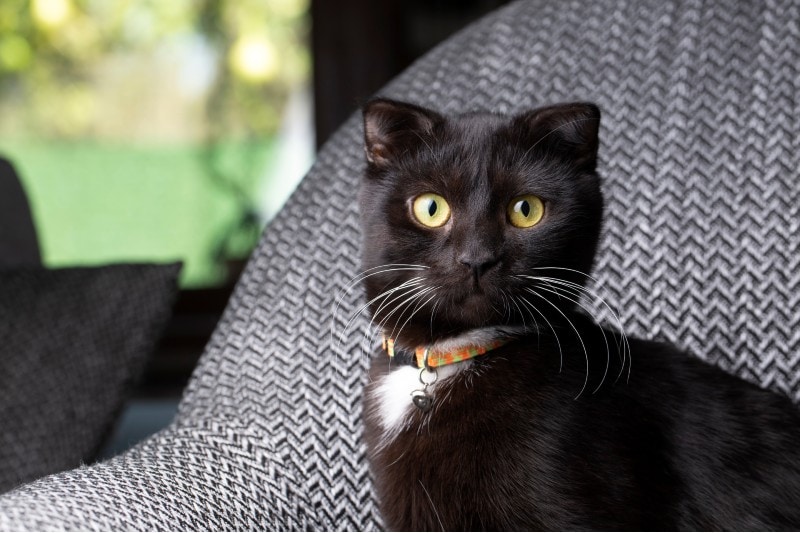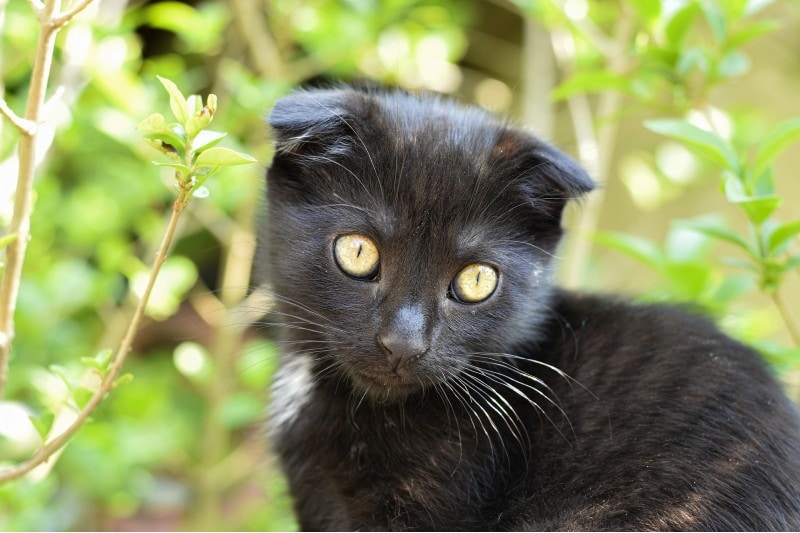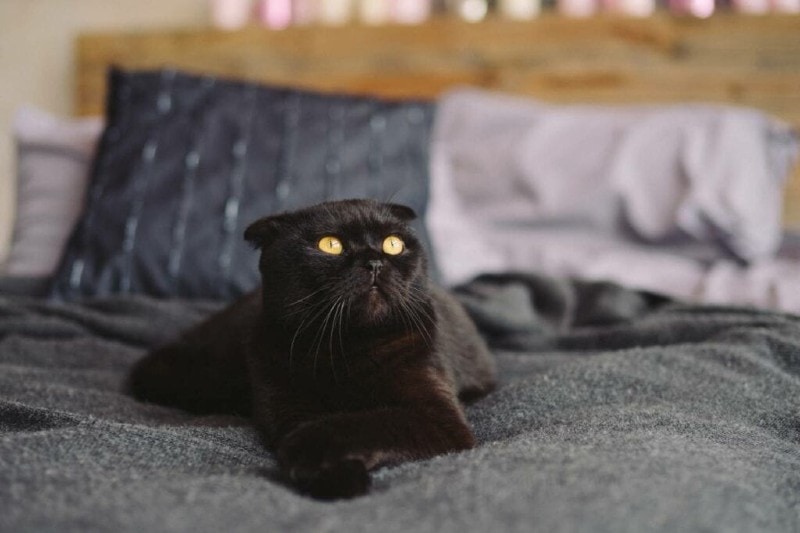Black Scottish Fold: Facts, Origin & History (With Pictures)
Updated on

The Scottish Fold is a breed of cat with a rare genetic condition that affects the cartilage in its ears. The condition causes the ears to fold forward and down, giving the cat its signature look. These folded ears cause the cat’s head to look large and round; this appearance is why they’re sometimes referred to as “an owl in a cat suit.”
If you’re considering adopting one of the adorable cats, keep reading; below, we’ll tell you everything you need to know about adopting and owning a Scottish Fold.
The Earliest Records of Black Scottish Folds in History
Unlike most breeds, we can trace the Scottish Fold back to one specific cat, and we even have the cat’s name. The first Scottish Fold in recorded history was a farm cat named Susie; she was discovered in 1961 on a farm in Perthshire, Scotland. When Susie had kittens, it was discovered that she passed on her unique ears to half of her litter.
A neighboring farmer named William Ross began breeding the kittens with the help of a geneticist; this is when the genetic condition of the Scottish Fold began to be understood. It was discovered that Scottish Folds weren’t born with folded ears but instead began developing them at 21 days.
How Black Scottish Folds Gained Popularity

The Scottish Fold gained popularity in no small part due to the breeding by William Ross and geneticist Pat Turner. The pair managed to breed 42 kittens with folded ears in the 3 years they worked together, which was a task made even more difficult by the fact that Scottish Folds tend to have smaller litters than other breeds.
In 1970, the Scottish Fold made its way to America when Pat Turner sent three of Susie’s descendants to researcher Dr. Neil Todd at the Carnivore Genetics Research Center in Massachusetts. Dr. Neil Todd was studying spontaneous mutation, and Turner believed Susie to be a result of a random mutation.
The Scottish Fold then began to grow in popularity in the US due to its calm demeanor and unique look.
Formal Recognition of Black Scottish Folds
In 1973, a mere 3 years after they were brought to America, the Scottish Fold was officially recognized by the Cat Fancier’s Association. But it wasn’t until 1978 that the breed was given championship status, meaning that the Scottish Fold was allowed to compete in events in cat shows.
But all types of Scottish Fold weren’t recognized in the ’70s. It wasn’t until the 1980’s that the Longhair Scottish Fold was recognized. It’s also worth noting that some organizations don’t refer to the cat as the Scottish Fold; many call it the Highland Fold, and the Cat Fancier’s Federation dropped the “Scottish” in Scottish Longhair Fold.
Top 3 Unique Facts About Black Scottish Folds
1. They Sleep in a Weird Position
The Scottish Fold sleeps in a way unusual for other cats. They have been known to sleep on their backs with their back legs outstretched and their front paws on their chest; this is referred to as “The Buddha Position.”
2. They Can Have Three Different Eye Colors
The Scottish Fold can have either blue, green, or gold eyes.
3. They Are Prone to Arthritis
The Scottish Fold is more prone to arthritis than most other breeds, especially in its tail. The tail of a Scottish Fold needs to be handled delicately because it can be a source of intense pain for the feline.

Does the Black Scottish Fold Make a Good Pet?
The Scottish Fold makes a perfect pet. They’re low maintenance, easy to care for, and well-behaved around strangers and small children. While they aren’t the most playful cat out there, they love attention and will even tolerate a bit of rough play from small children. They are also very intelligent and easy to train.
Their short fur makes shedding almost a non-issue and means you only have to brush them every two weeks. The only problem with owning a Scottish Fold is that they need and demand lots of attention, and if they feel ignored or neglected, they may become destructive.
Final Thoughts
The Black Scottish Fold is no different from other Scottish Folds that you can adopt today. They have different eye colors, sleep in strange positions, and must be brushed about every two weeks. They make exceptional pets, and since they don’t shed very much, they’re simple to care for.
If you are considering adopting a Scottish Fold cat for a pet, remember that they demand more attention than most breeds.
Featured Image Credit: Esin Deniz, Shutterstock










